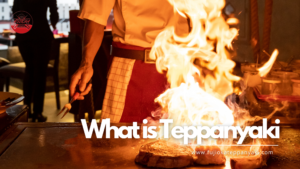
Foodies love to know about the style of cooking used in a particular cuisine as much as they enjoy the taste of a particular dish. We are giving you a brief introduction to teppanyaki food, So let’s get started to know about the history, ingredients, and skills of the chefs involved in this beautiful style of cooking;
The genesis of the word teppanyaki: The word Teppanyaki is derived from the Japanese words, “teppan ” which means metal plate, and “yaki” which means grilled, fried, and pan-fried. Teppanyaki style cooking means grilling or frying the food on an iron plate.
A sneak peek at the history of the Teppanyaki style of cooking
Teppanyaki was started by local steak houses in Japan about 200 years ago. Noteworthy skills of teppanyaki chefs, like tossing the food, and making an onion volcano to flame are startling to watch. The process of cooking teppanyaki food is a great culinary scene to watch. Various cuisines are cooked on teppanyaki like shrimp, chicken, beef, vegetables, and fried noodles.
The Inception of Teppanyaki-Style cooking in Kobe
The journey of teppanyaki food making started in a Restaurant named Misono, which was opened in Kobe, in 1945. The restaurant started this staggering idea of cooking food in front of their clients, thus presenting this food-making process as performance art.
Skilled chefs deliberately manoeuvred their knives in a particular way during food making, which attracted the foreigners visiting Japan. To enhance the culinary experience further, they started incorporating the use of a grill pan (to their guests the idea of buying one to recreate the flavors at home. This addition not only enriched the cooking show but also offered a tangible connection to the experience. Increased popularity brought more revenue and more visitors to the restaurant. So, chefs introduced new tricks to attract their clients like flipping and tossing ingredients during cooking and stacking up onions to flame them like a volcano. This innovation led to a significant increase in the number of visitors.
Teppanyaki’s Voyage the to the United States
The first restaurant in the United States that started teppanyaki-style cooking was named Benihana. In 1964 Americans started to enjoy teppanyaki food performances and it got famous throughout the country. Different restaurants named “Japanese steakhouses “ were started in America that used teppanyaki cooking styles.
Ingredients used for cooking in Teppanyaki style
- Meat, chicken, and seafood like shrimp
- Rice and yakisoba (fried noodles)
In a traditional style of Japanese teppanyaki, the ingredients used are yakisoba, cabbage, and sliced meat. Teppanyaki cooking in western-style mostly uses beef, scallops, chicken, shrimp, lobster, and vegetables. Soybean oil is used to cook them.
How the teppanyaki cooking style is Distinctive?
Guests are seated around a large teppan grill. A beautiful ambience is created for the guests to enjoy the aroma and view of the teppanyaki food. The performance has majorly 3 steps ;
1. Flipping and Drumming of cooking tools
Chefs start flipping and tossing different tools used in cooking like knives, forks, and spatula. The drumming with the tools makes this a proper entertainment show.
2. Chopping and dicing of ingredients
The chefs present an alluring show of ingredients like meat and vegetables by beautifully cutting and dicing them. other techniques shown by chefs are throwing an egg in the air and using a spatula to break it. You may see a chef catching a shrimp in his pocket, during teppanyaki-style of cooking.
3. Flaming and cooking
Flamming the teppan grill and starting cooking the ingredients by tossing them in different ways is a visually delightful, and mouthwatering experience for the guests. During cooking, the chef show tricks like stacking up onions and then flaming them like a volcano. Flipping cooked pieces of shrimp to the client’s mouth is also a great way of interaction between the chef and the visitor of the restaurant.
Are you looking for Teppanyaki Catering in Los Angeles?
